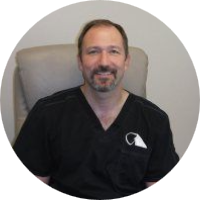Oral cancer is fast becoming one of the more prevalent malignant diseases in the US and in the entire world. With more than 35,000 cases of oral cancer being reported in an annual basis, dentists and other medical professionals are pushing the bounds of science to be able to find easier and more effective ways to diagnose people with oral cancer while the malignancy is still at its earlier stages. While oral cancer may not be the easiest of all the cancers to cure, figures have shown that for as long as a case is detected earlier, there is a decent chance of survival.
But the problem with oral cancer is that self-detection is rather difficult. Most of the time, oral cancers start off as a cold sore or a crusting which refuses to heal. Traditionally, the best way to diagnose oral cancer is through regular screening by the dentist. This is the pressing reason for why dentists advise their patients to see them for regular check-ups at least once every six months. But because of the lack of dental insurance, more and more Americans are foregoing this crucial trip to the dentist.
And even if someone never fails to show up for a routine check-up and screening for oral cancer, diagnosing a malignancy can still take a lengthy period of time since biopsies will have to be made. However, a breakthrough of a study conducted by the UCLA and funded by the National Institutes of Health has determined that saliva could be used in the diagnosis of oral cancer. In this exploratory study, it has been found out that oral cancer could be detected in 9 out of 10 cancer patients. Saliva has long been used in detection of various diseases including HIV through the presence of protein antibodies.
This study has completely shifted the entire focus of diagnosing oral cancer from invasive procedures to something that does not even require the drawing of blood from a patient. The detection of oral cancer is done by analyzing saliva for the presence of 4 RNA biomarkers which are generally found in individuals with the malignancy. RNA carries a person’s genetic information while, DNA contains instructions for the production of proteins. Currently, the procedure can detect various forms of head and neck cancers, and include ones that infect the mouth, tongue, pharynx and larynx.




